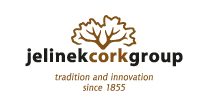In the ever-growing sustainable building material market, there are dozens of choices for your project, but how do you know which material is the best for your unique space? The intended use and traffic of a room, concerns such as direct sunlight and temperature control, and cost are all factors that may help you pick the best material for your project.
Sustainable flooring options are one of the oldest sustainable building material categories, but it doesn't stop it from being one of the market's fastest-growing segments! When you look at sustainable flooring, there are two subcategories.
New Materials
Recycled or Reclaimed Materials
New materials include sustainably sourced wood and environmentally friendly plant-based options such as bamboo, hemp, wool carpets, tile, and, of course, cork!
Rubber Cork flooring installed in the Grand Rapids Chamber of Commerce. Patterns used: Alpine, Barn Door and Coco Bean
Bamboo Flooring
Cons
- Very susceptible to damage if not adequately sealed
- Ethical concerns over worker safety
- Expensive
- Hard underfoot
Pros
- Incredibly durable
- Easy to clean and care for
- Modern aesthetic
- Long-lasting with a 25-year expected lifespan
Hemp Flooring
Cons
- Unknown long-term wear
- Hard underfoot
- Expensive
- Difficult to find
Pros
- Resembles traditional wood
- Stainable
- Hemp plants benefit the soil
- Durable
Wool Carpet
Cons
- Not suitable for wet environments like bathrooms
- More expensive than acrylic carpet
- Pest concerns
- Not suitable for those with a wool allergy
Pros
- Naturally stain resistant
- Insulative and warm underfoot
- Durable
- Inhibits static electricity
Tile Flooring
Cons
- Cold and hard underfoot
- Items may shatter when dropped
- Increases noise transfer and echoing
Pros
- Wise variety of tile types and patterns
- Economical options
- Stain and water-resistant
Cork Flooring
Cons
- Extra care when moving furniture
- May be expensive
- Difficult to find an exact match for patterns
Pros
- Soft and warm underfoot
- Noise dampening
- Long-lasting with proper care
Reclaimed and recycled flooring options are an ideal choice, particularly in high-traffic locations such as offices, gyms, and convention centers. Reclaimed wood is sourced from buildings that have been taken down and is typically stronger than modern wood. This is because it comes from old-growth trees with denser wood than modern trees cut much younger.
Recycled flooring includes recycled rubber cork flooring, which is a mixture of new and recycled materials blended together to create strong and durable flooring in a wide variety of bright colors. Rubber Cork flooring is perfect for use in gymnasiums, conference centers, and other high-traffic areas.
Wall coverings are less often considered when choosing sustainable products, but they can be equally important! Sustainable wall coverings include water-based biodegradable paints with low or no VOCs, wood wool wall tiles to help reduce sound transfer while adding a modern touch, recycled plastic wall tiles providing depth and color, cork wall tiles creating a pinnable decorative surface that will help dampen sound transfer, and more!
Jelinek Cork’s Harmony wall tile in 3mm installed in a bathroom in Los Angles California as featured in Architectural Digest Fall 2022 Edition
Wood Wool Wall Tiles
Cons
- Expensive
- Can be difficult to clean
- Not ideal for those allergic to wool
Pros
- Vibrant color options
- Endless pattern combinations
- Moisture and temperature regulating
Water-based Low and No VOC Paints
Cons
- More expensive than traditional paint
- No VOC paint comes in limited colors
- No VOC paint can be difficult to apply
Pros
- Improved air quality
- Low Odor
- Improved durability compared to standard paints
Cork Wall Tiles
Cons
- Thicker tiles can be expensive
- Limited color range
- Difficult to remove
Pros
- Excellent thermal and acoustic insulator
- Creates a pinnable surface
- Intriguing natural patterns
Recycled Plastic Wall Tiles
Cons
- May be difficult to get depending on your location
- Off-gassing concerns
- Newer product with limited history
Pros
- Recycled material reducing landfill waste
- Vibrant colors and patterns available
- Multiple installation options
Sustainable wall coverings are a growing market segment, with innovations happening almost daily. This makes it an exciting group of materials to watch!
Sustainable exteriors are another home area that has long been neglected when it comes to sustainable options. However, that has begun to change in the last decade. Countless research and development have recently gone into discovering sustainable and cost-effective solutions for siding and roofing materials.
Cork spray with a white toner applied to a south west style house.
More Sustainable Concrete Mixtures
Cons
- Still highly reliant on water in production
- Labor intensive to produce
- More expensive than traditional concrete
Pros
- Does not emit harmful chemicals when exposed to the sun
- Highly customizable
- Incredibly durable
Recycled PVC Materials
Cons
- Difficult to acquire
- Expensive
- Newer product with limited history
Pros
- Made from 100% recycled materials
- Vibrant color choices
- Easy to install
Cork Spray
Cons
- Expensive
- Paint sprayer required to install
Pros
- Breathable thermal insulator
- Resistant to Salt and UV Rays
- Can be used in landscaping also
Look at your project as a whole when deciding what materials will work best for your design. Each of the above options is a great sustainable option, but one material may work better than another based on your individual circumstances.



